Tired of Dry Chicken? This Is the Marinade Guide You’ve Been Waiting For
I’ve cooked more chicken than I can count. After years in professional kitchens and helping countless friends get their cooking confidence up, I can tell you one thing for sure: when chicken comes out dry and tough, it’s almost never about how you cooked it. The real culprit is the prep work.
In this article
A great marinade is so much more than just a flavor bath for your meat. It’s a bit of kitchen science that fundamentally changes the chicken’s texture, locking in moisture and guaranteeing a tender, juicy bite every single time.
So many people just toss a few random ingredients from the fridge into a bag, cross their fingers, and end up with meh results. But there’s a craft to it. Once you understand what’s actually happening to the meat, you can stop guessing and start making incredible chicken on purpose. Forget the overly complicated online recipes for a minute. Let’s get into the core principles that pros rely on.
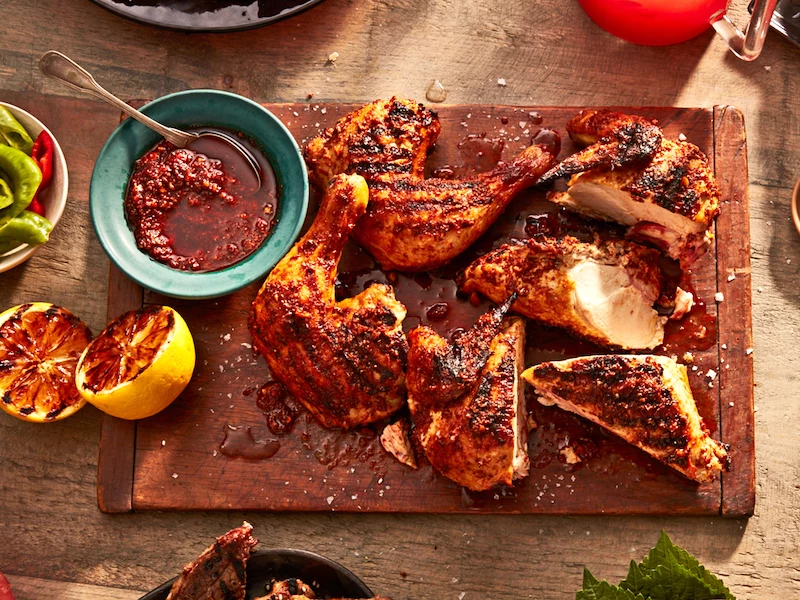
The Simple Science of a Perfect Marinade
To get consistent results, you have to know what you’re working with. A marinade really only works in three ways: with acid, with enzymes, or with salt. Each one has a job to do, and honestly, getting the balance wrong is why most marinades fail.
ACID: The Good, The Bad, and The Mushy
Acid is the most common tenderizer you’ll find. We’re talking about things like lemon juice, vinegar, wine, and even buttermilk or yogurt. When you add chicken to an acidic marinade, it starts to unwind the tight protein fibers in the muscle. This process is called denaturation, and it’s what makes the meat feel more tender.
But—and this is a big but—there’s a tipping point. I’ve seen it happen. Someone leaves chicken in a super-lemony marinade for way too long, thinking more is better. The result? A disaster. The outside of the chicken gets chalky and mushy. The acid has essentially “cooked” the surface, kind of like how ceviche is made, and the texture is just awful.
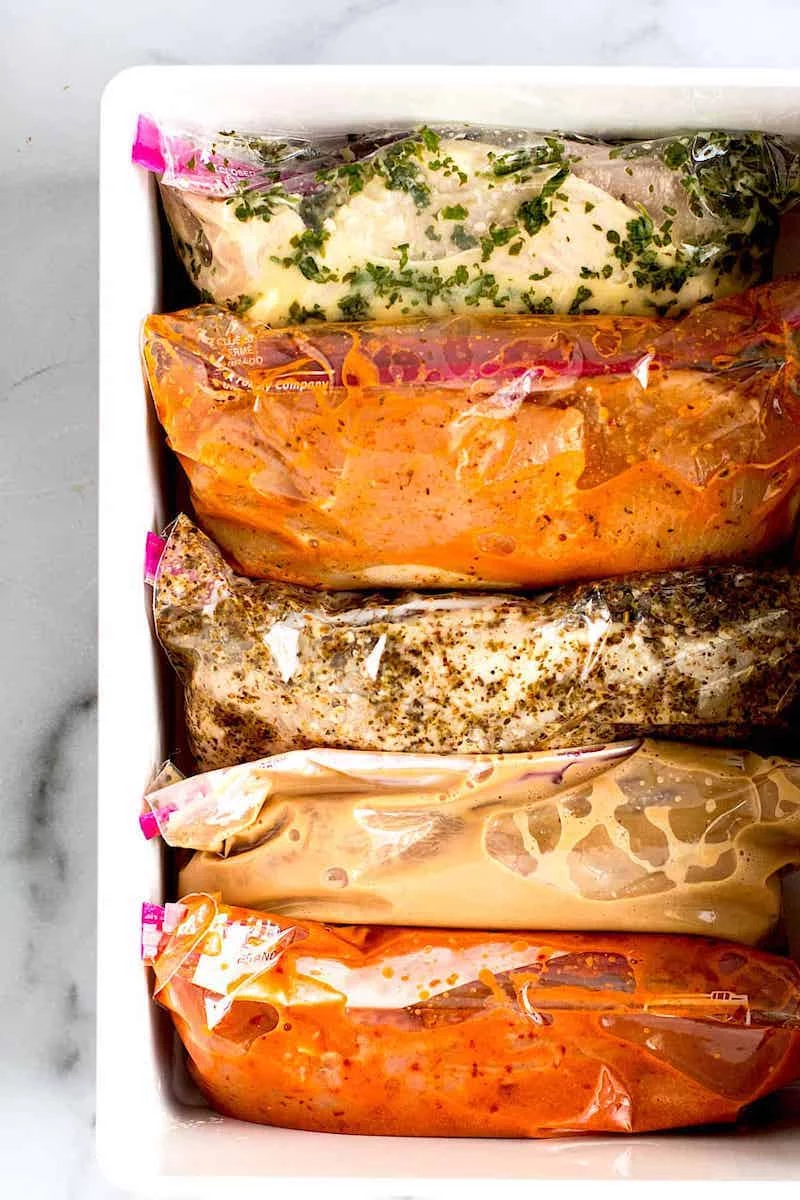
The secret is moderation. This is why yogurt and buttermilk are absolute superstars for marinades. The lactic acid they contain is way milder than the citric acid in a lemon. It works slowly and gently, so you have a much bigger window for success. As a general rule, a strong, citrus-based marinade shouldn’t go for more than 2-4 hours. A gentle yogurt marinade? You can let that go for 8 hours or even overnight without a problem.
ENZYMES: Super Powerful, Super Risky
Certain fresh fruits are packed with powerful enzymes that literally dissolve protein. Think pineapple (bromelain), papaya (papain), and kiwi (actinidin). Even ginger has a little kick of this stuff. These are incredibly effective at breaking down tough muscle and connective tissue—way more powerful than acid.
And this is where a lot of people get into some serious trouble. I learned this the hard way years ago while prepping for a big catering gig. I thought a fresh pineapple marinade would be amazing for a huge batch of chicken skewers. I let them sit for about six hours. When I went to thread the chicken onto the skewers, it had turned into a stringy, pasty mush. It was completely ruined. I had to remake everything from scratch.
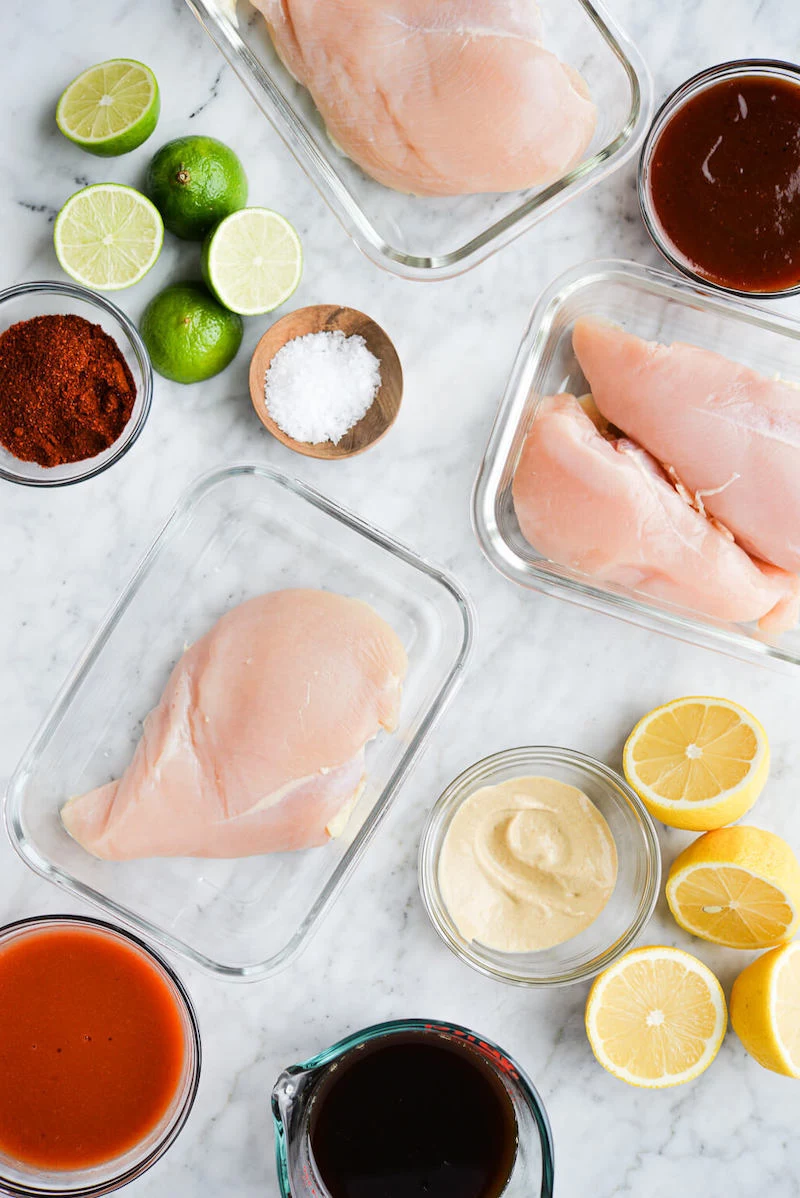
Enzymatic marinades work FAST. For something potent like fresh pineapple, you should marinate chicken for 30 to 60 minutes, tops. Any longer and the texture is gone. By the way, canned pineapple juice is a different story. The heating process used for canning deactivates most of the enzymes, so while it adds flavor, it won’t tenderize nearly as much.
SALT: The Unsung Hero of Juicy Chicken
Okay, let’s clear something up. Some old-school advice says to avoid salt in marinades. That’s just plain wrong. Salt is absolutely essential for juicy chicken.
Here’s what happens: the salt draws a little moisture out of the chicken at first, but then it dissolves in that moisture to create a brine. This brine is then reabsorbed deep into the meat. It seasons the chicken from the inside out and, more importantly, it changes the protein structure so the chicken holds onto more of its own juices during cooking. A good marinade should always have salt.
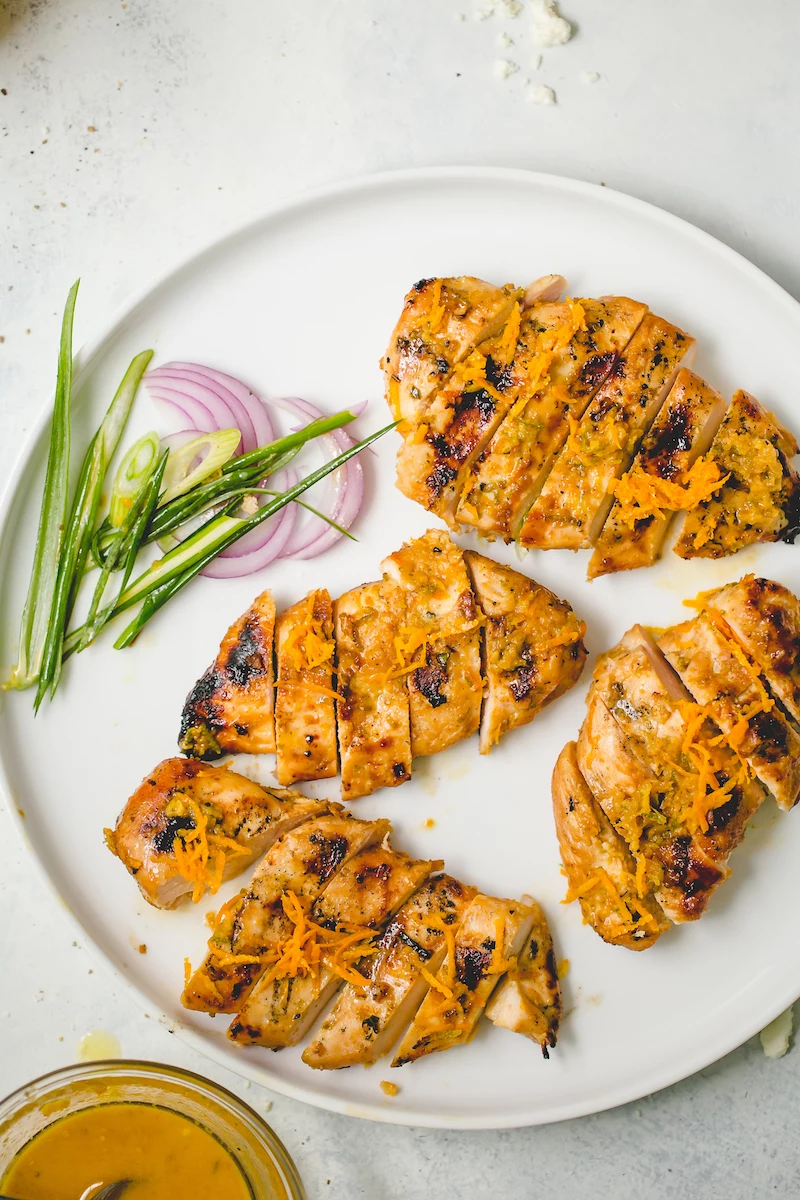
Quick tip: A great starting point is 1 teaspoon of kosher salt per pound of boneless, skinless chicken. Heads up! I mean kosher salt, with its coarse, flaky crystals. If you’re using regular fine table salt, cut that amount in half (so, ½ teaspoon) or your chicken will be a salt bomb. It’s a tiny detail that makes a huge difference.
Pro Techniques That Make All the Difference
Beyond the ingredients, a few simple physical steps we use in professional kitchens can elevate your chicken game immediately.
First Things First: Pound or Score Your Chicken
Before any marinade gets involved, prep the meat itself. For those unevenly thick chicken breasts, pounding is non-negotiable. Place a breast inside a zip-top bag or between two sheets of plastic wrap. Using a meat mallet, the bottom of a small frying pan, or even a rolling pin, gently pound the thicker end down. You’re transforming it from a lumpy, teardrop-shaped piece into a uniform ¾-inch-thick cutlet.
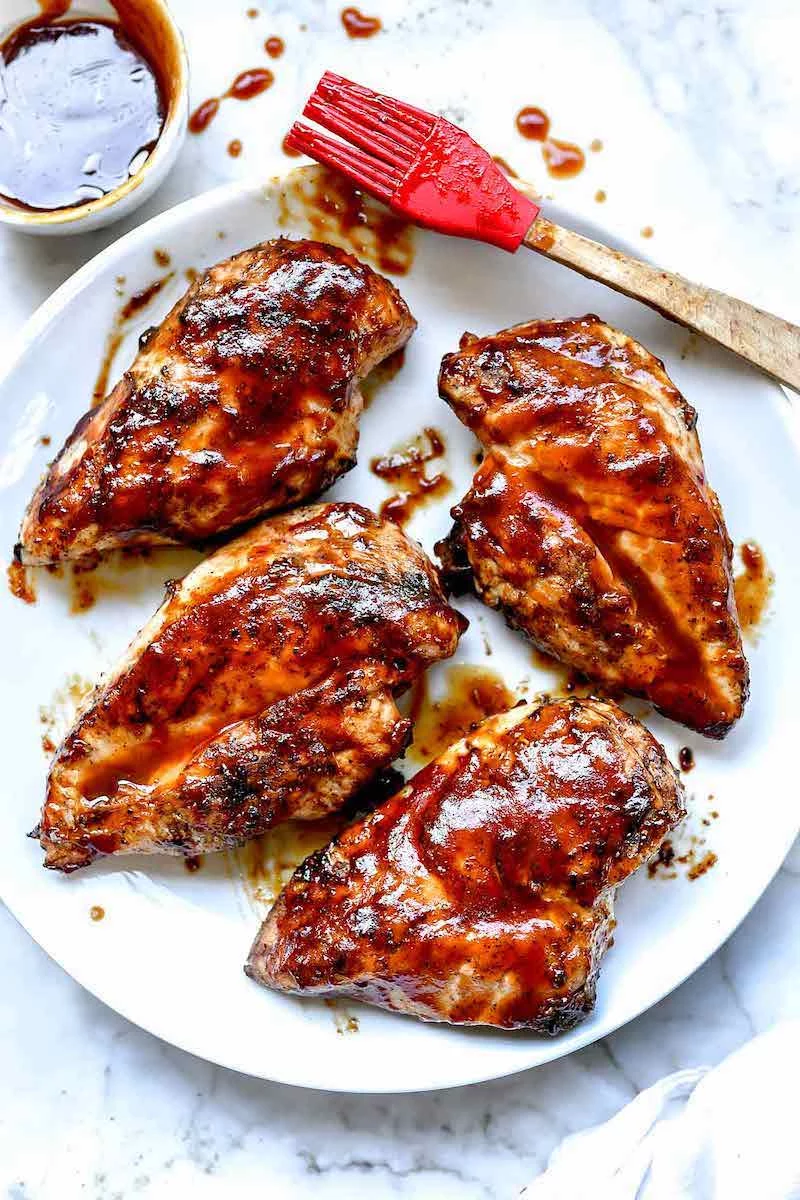
This does two crucial things: it guarantees even cooking (no more dry thin end and raw thick end!), and it physically breaks down fibers, giving you a head start on tenderness.
For other cuts? If you’re working with thighs or drumsticks, I recommend scoring them. Just use a sharp knife to make a few shallow diagonal cuts across the surface. This creates more surface area for the marinade to get in and do its magic. Wings, on the other hand, usually just need a good toss and they’re ready to go.
Your Container Matters
This sounds basic, but it’s a big deal for both safety and flavor. Always marinate in a non-reactive container. A glass dish, a stainless steel bowl, or a food-grade zip-top bag are your best friends here. Never, ever use an aluminum bowl or pan. The acid in your marinade can react with the metal, giving your food a nasty metallic taste.

I’m a huge fan of using zip-top bags. You can squeeze all the air out, ensuring every bit of the chicken is in contact with the marinade. Plus, cleanup is a breeze.
Freezing for Later: A Meal Prep Game-Changer
So many people ask this: “Can I freeze chicken in the marinade?” And the answer is a resounding YES. It’s one of the best meal prep hacks out there.
Just combine your chicken and marinade in a freezer-safe zip-top bag, squeeze out all the air, label it, and toss it in the freezer. It’ll keep for up to three months. The chicken will marinate as it thaws, so you get all that flavor infusion with zero extra effort on a busy weeknight. Just transfer the bag from the freezer to the fridge the day before you plan to cook it.
Four Foundational Marinades to Master
Instead of a million random recipes, let’s focus on four core types. Once you get these down, you can mix and match to create anything you want.
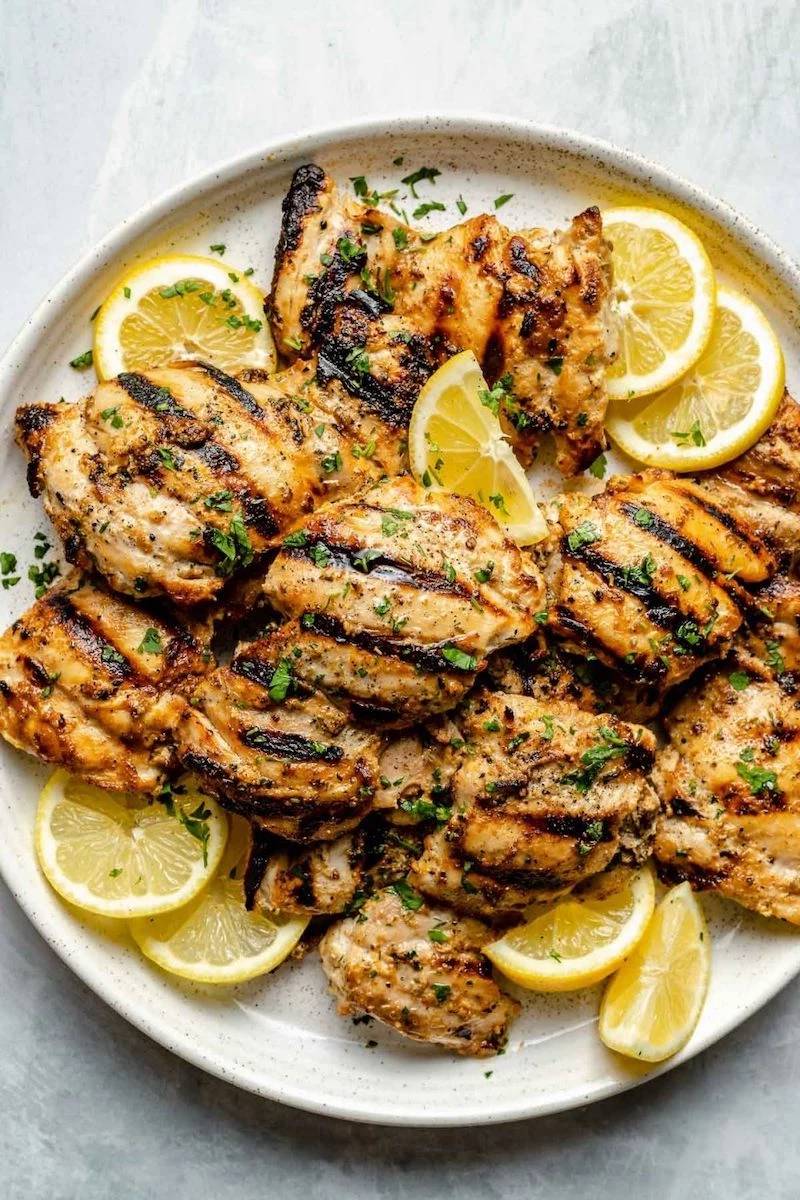
1. The Gentle Giant: Greek Yogurt & Herb
This is my go-to for incredibly tender grilled chicken. The gentle acid works its magic slowly, and the fat in the yogurt keeps the chicken from drying out.
- Flavor Profile: Tangy, herby, and rich.
- Best For: Grilling or baking chicken breasts and thighs.
- Ingredients (for ~1.5 lbs chicken): 1 cup full-fat plain Greek yogurt, juice of 1 lemon, 2 tbsp olive oil, 4 minced garlic cloves, 1 tbsp dried oregano, 1.5 tsp kosher salt, ½ tsp black pepper.
- Budget Tip: Full-fat Greek yogurt is great, but regular plain yogurt works just fine and is often cheaper. No fresh herbs? Use 1 teaspoon of dried for every 1 tablespoon of fresh called for in a recipe.
- Technique: Mix everything in a bowl, add the chicken, and let it marinate for 4 to 12 hours. Before cooking, use a spoon to gently scrape off the thickest clumps of marinade. This helps you get a great sear instead of a burnt, pasty coating.
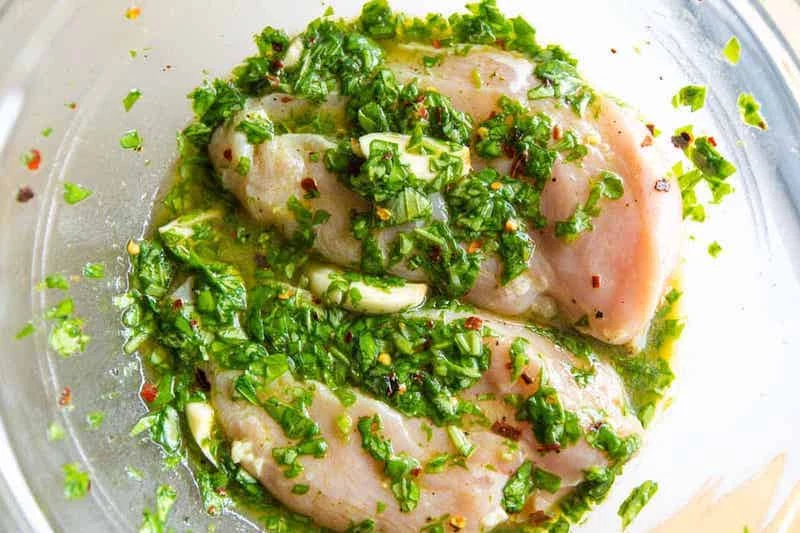
2. The Bright & Fast: Classic Italian-Style
This is a quick, zesty marinade that’s perfect when you’re short on time. Because it’s higher in acid, you have to watch the clock.
- Flavor Profile: Bright, fresh, and zesty.
- Best For: Pan-searing or grilling thin-sliced chicken cutlets.
- Ingredients (for ~1.5 lbs chicken): ½ cup olive oil, ⅓ cup fresh lemon juice, 3-4 smashed garlic cloves, 1 tbsp mixed fresh herbs (rosemary, thyme), 1.5 tsp kosher salt, ½ tsp black pepper.
- Technique: Mix it all up. Smashing the garlic instead of mincing releases flavor without creating little bits that burn easily. Marinate for 2 to 4 hours, and don’t go over that limit!
3. The Umami Bomb: Soy, Ginger & Garlic
A classic found in many Asian cuisines, this one is all about deep, savory flavor.
- Flavor Profile: Salty, sweet, and deeply savory.
- Best For: Stir-frying, grilling skewers, or baking thighs.
- Ingredients (for ~1.5 lbs chicken): ½ cup low-sodium soy sauce, 2 tbsp rice vinegar, 1 tbsp sesame oil, 1 tbsp honey, 1-inch piece of grated fresh ginger, 3 minced garlic cloves.
- Technique: Whisk it together and marinate for 2 to 6 hours.
- Troubleshooting: Marinades with sugar burn fast. If you’re grilling, you need a two-zone fire. Don’t know what that is? It’s simple: on a charcoal grill, pile your hot coals on one side. On a gas grill, turn one side to high and the other to low. Sear the chicken on the hot side, then move it to the cooler side to finish cooking without burning the outside.
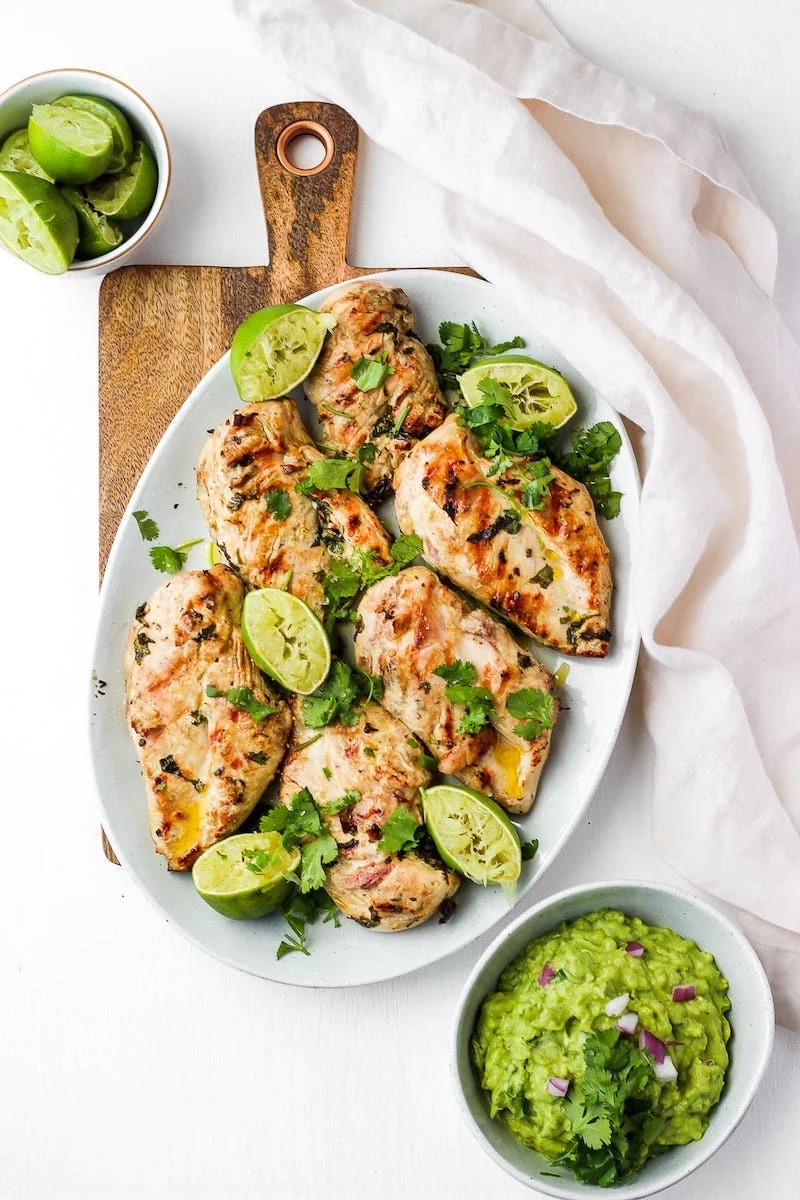
4. The Powerhouse: Controlled Pineapple Marinade
Okay, this is the advanced-level move. It delivers amazing tenderness when you do it right, but it’s all about precise timing.
- Flavor Profile: Sweet and tangy with a tropical vibe.
- Best For: Making tougher cuts incredibly tender for skewers or tacos.
- Ingredients (for ~1.5 lbs chicken): ¼ cup FRESH pineapple juice, 2 tbsp soy sauce, 1 tbsp vegetable oil, 1 minced garlic clove.
- Technique: This is not a drill: set a timer. Marinate for 30 minutes for small pieces, and absolutely no more than 60 minutes for thicker cuts. Any longer, and you’ll have that mushy disaster I warned you about. Respect the enzyme!
Kitchen Safety Is Not Optional
In a pro kitchen, we don’t mess around with food safety. These are the non-negotiables.
The #1 Rule: Don’t Reuse Your Marinade
Once raw chicken has touched a marinade, that liquid is contaminated. Period. Never, ever spoon used marinade over your cooked food. It’s a huge health risk.
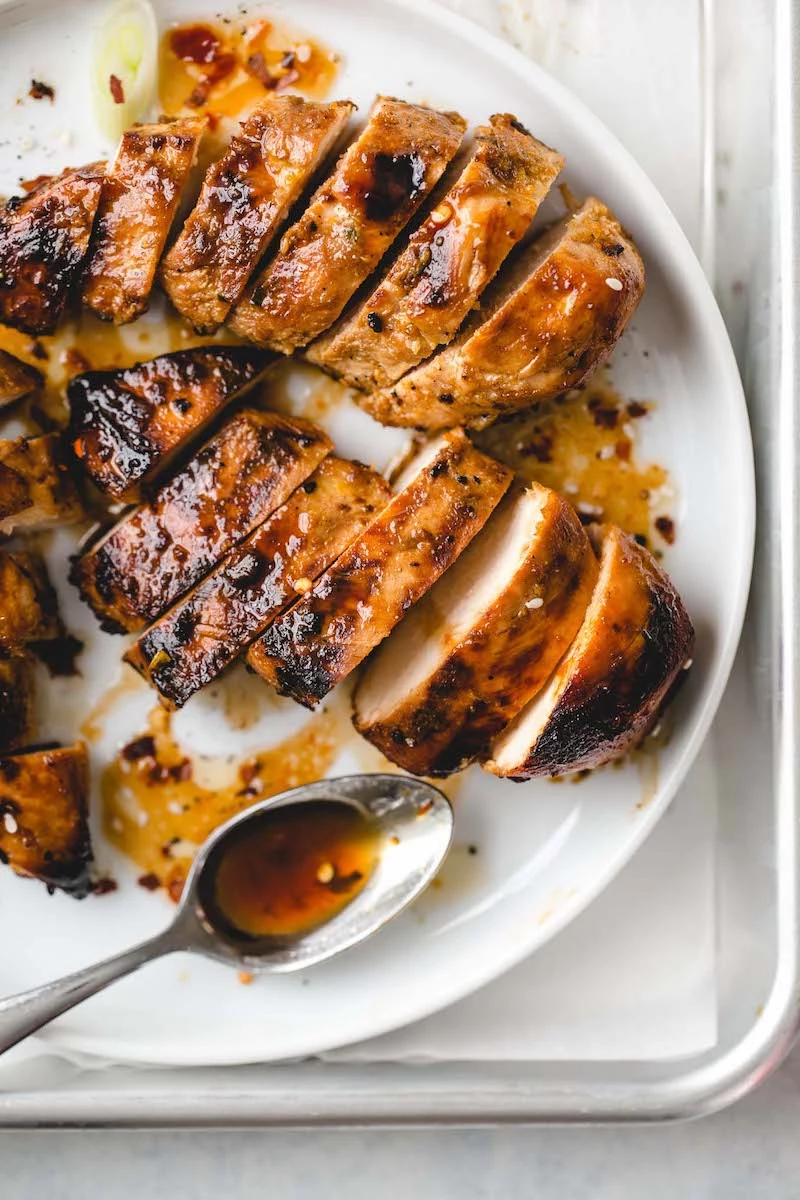
The pro move? Make about ½ cup of extra marinade before you add the chicken. Set that clean portion aside in a separate container. That’s your safe, delicious sauce for drizzling over the finished dish. If you absolutely must reuse the contaminated marinade, you have to bring it to a rolling boil for at least three full minutes to kill any bacteria. Honestly, setting some aside from the start is just easier and safer.
Temperature is Everything
Always, always marinate your chicken in the fridge. Leaving it on the counter, even for an hour, puts it in the temperature “danger zone” (between 40°F and 140°F) where bacteria thrive.
And please, get a meat thermometer. It’s the only way to know for sure if your chicken is cooked safely. Color is not a reliable guide. Chicken needs to reach an internal temperature of 165°F. I like to pull my chicken off the heat at 160°F and let it rest for 5 minutes. The residual heat will bring it up to 165°F, and the rest allows the juices to settle back into the meat. Seriously, if you don’t own an instant-read digital thermometer, it’s the best $15-20 you can spend on your kitchen. You can grab one online or at any Target or Walmart.
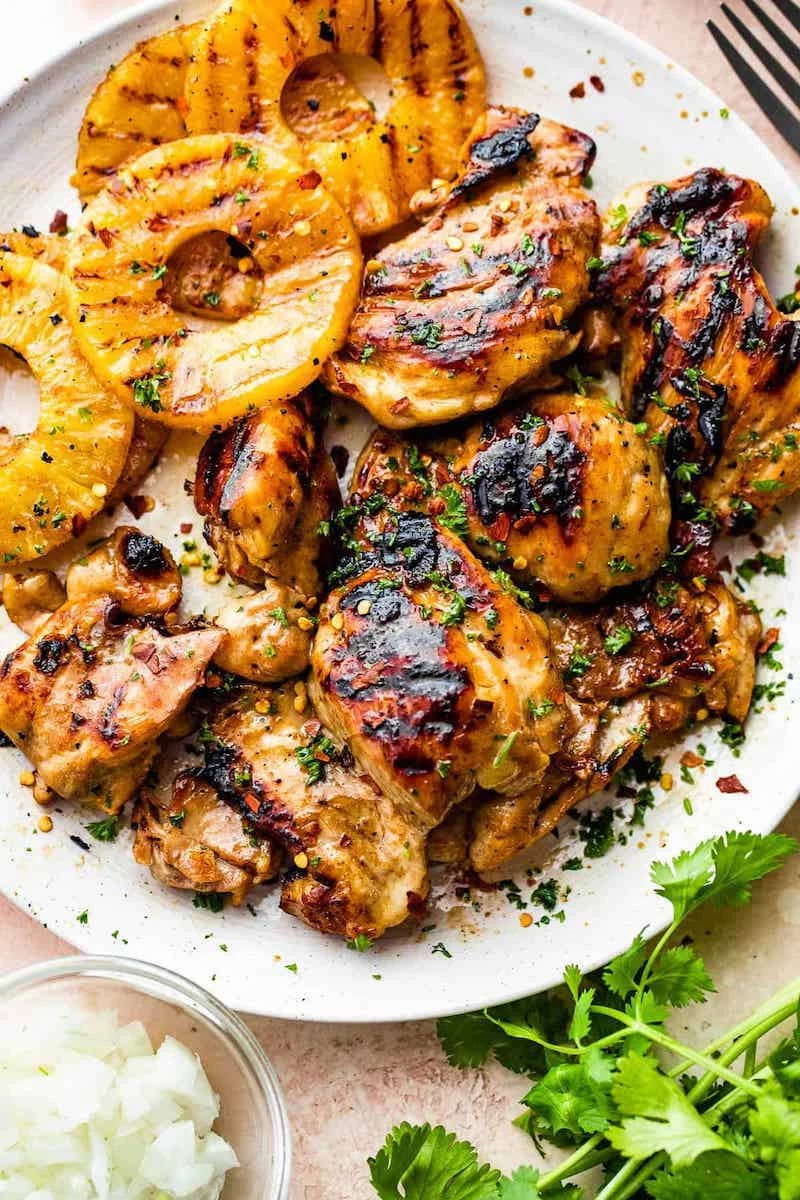
Final Thoughts
Marinating isn’t just about following a recipe; it’s about understanding a process. When you know what acid, enzymes, and salt are doing, you’re no longer just hoping for the best—you’re in complete control. You can look in your fridge, see some yogurt and a lemon, and know exactly how to turn that into a fantastic meal.
Start simple, pay attention to your timing, and use that thermometer. Trust me, you’ve got this. Perfectly juicy, flavorful chicken is totally within your reach, every single time.
Inspirational Gallery
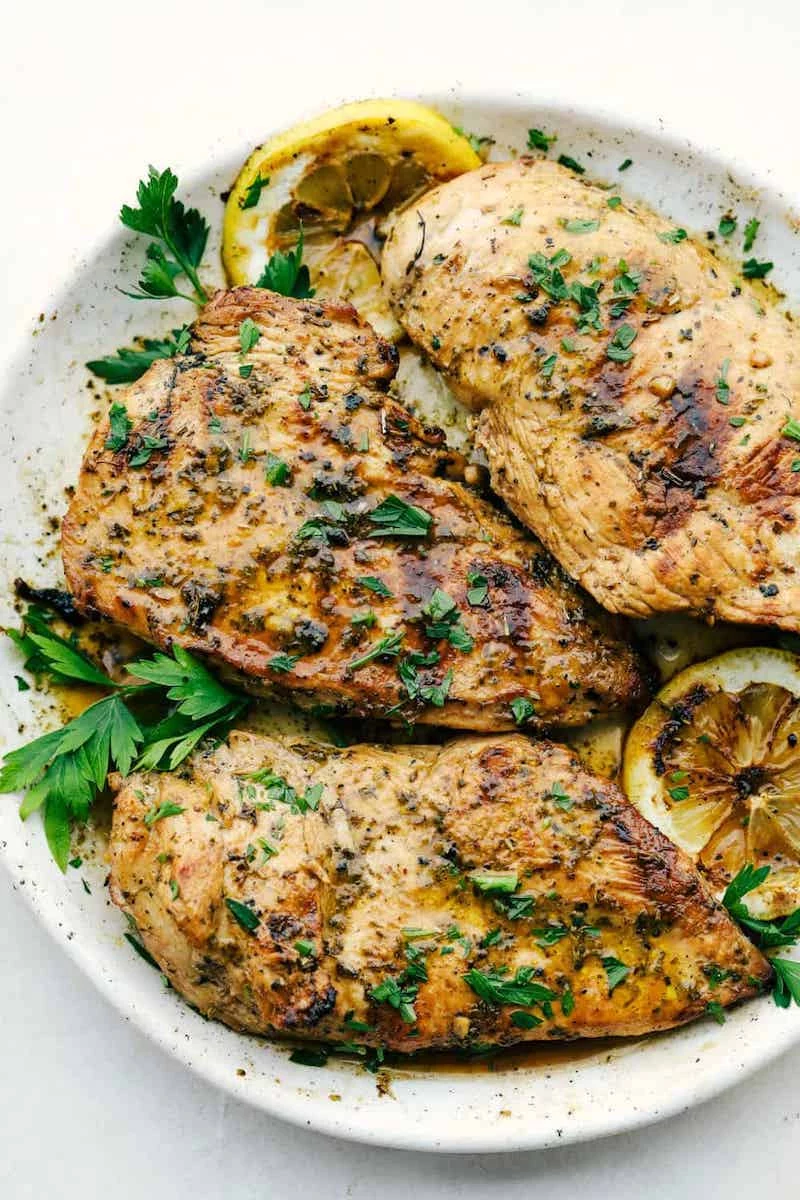

The Flavor-Color Connection: Don’t just taste your marinade, look at it. The color is your first clue to the flavor profile. A deep, rich red from smoked paprika or a harissa paste like the one from Mina promises smoky heat. A vibrant yellow, powered by turmeric and Dijon mustard, suggests earthy, tangy notes perfect for grilling. Bright green from a blitz of fresh cilantro, parsley, and jalapeño signals a fresh, zesty result that will sing on the plate.
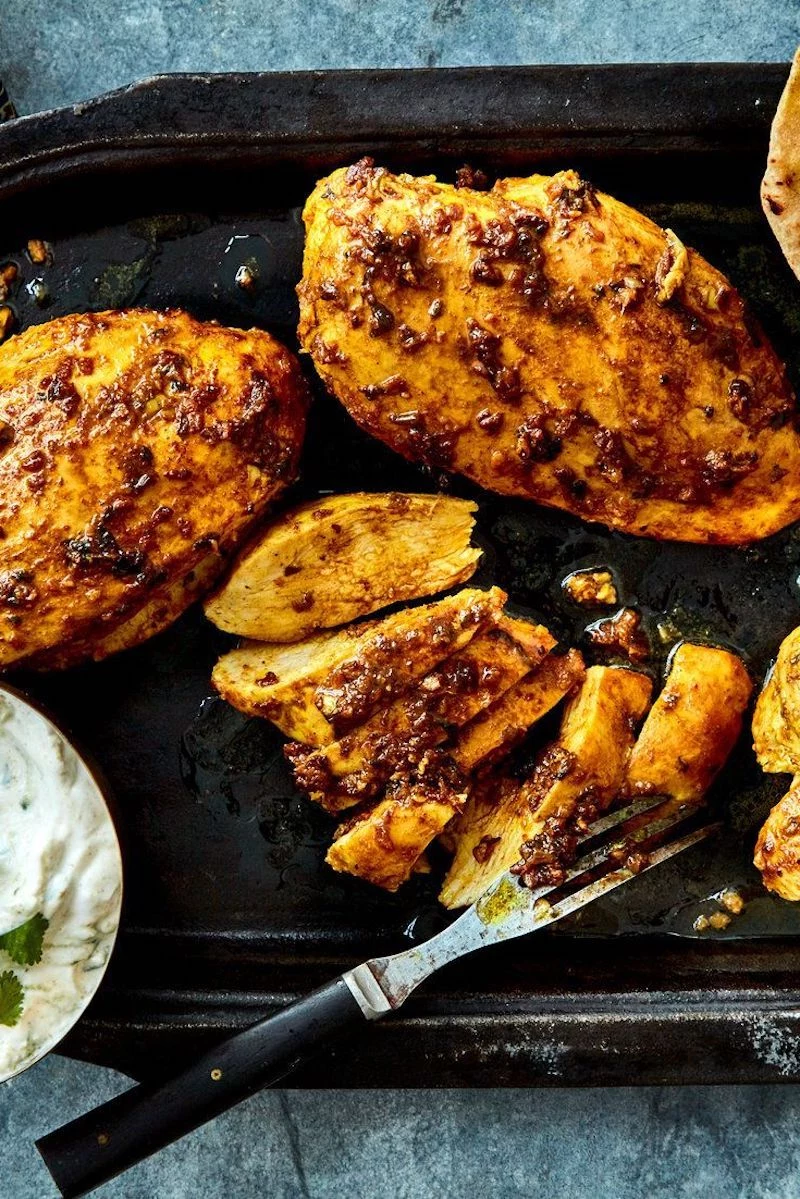
- Exceptional tenderness without becoming mushy.
- A rich, savory depth that goes beyond simple saltiness.
- A beautiful, caramelized crust when cooked.
The secret? Introducing umami bombs. While the article focuses on acid, incorporating ingredients like a spoonful of white miso paste, a dash of Worcestershire sauce, or even finely minced anchovies adds a profound savory complexity that transforms a good marinade into an unforgettable one.
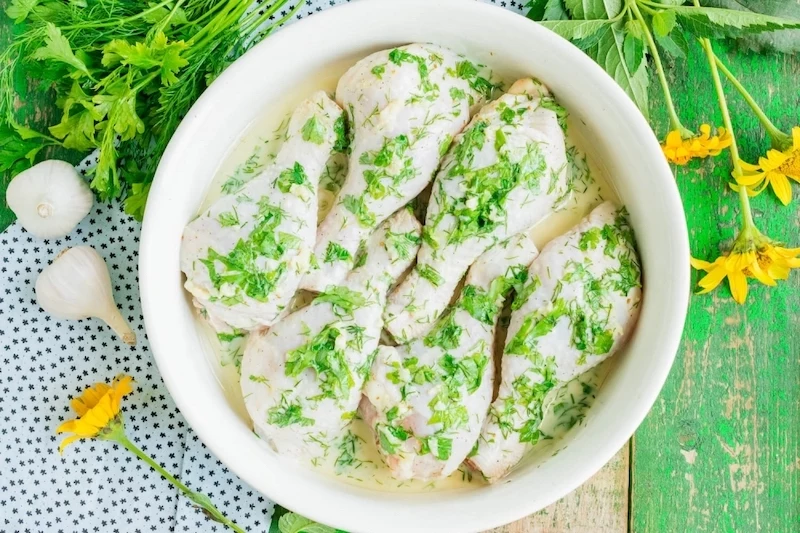
What’s the best vessel for marinating?
It’s a matter of purpose. For efficiency and maximum coverage with minimum marinade, nothing beats a heavy-duty, double-zip resealable bag (like Ziploc’s Gallon Freezer Bags). You can squeeze out all the air, ensuring every part of the chicken is in contact with the liquid. For larger batches, whole chickens, or when avoiding plastic, a non-reactive glass or ceramic dish is ideal. Just be sure the chicken is fully submerged or that you turn it frequently.
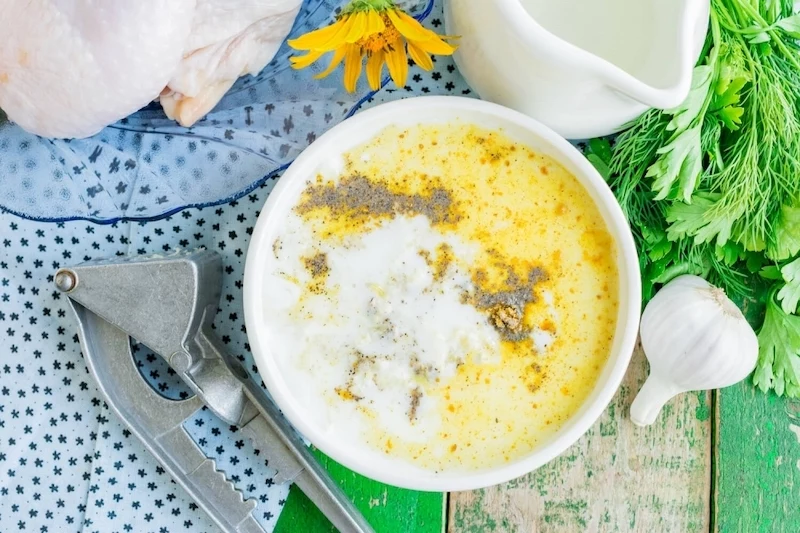
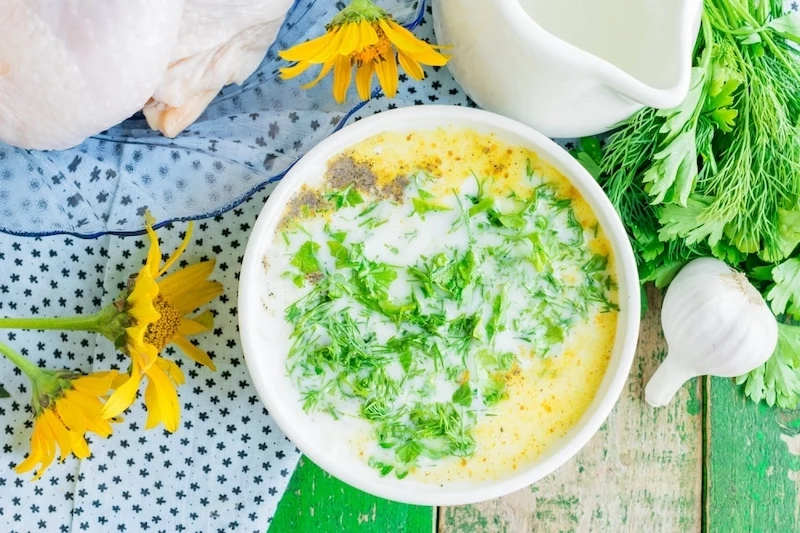
A great marinade isn’t just about the liquids. The right tools ensure perfect integration of flavors and safe handling. Building a dedicated ‘marinade toolkit’ can make the process seamless.
- A small whisk: Essential for emulsifying oil and acid into a stable, non-separating mixture.
- A Microplane grater: For turning garlic, ginger, and citrus zest into a fine paste that releases maximum flavor and blends smoothly.
- Designated non-porous cutting board: Use a plastic or composite board (like those from Epicurean) exclusively for raw meat to prevent cross-contamination with vegetables.
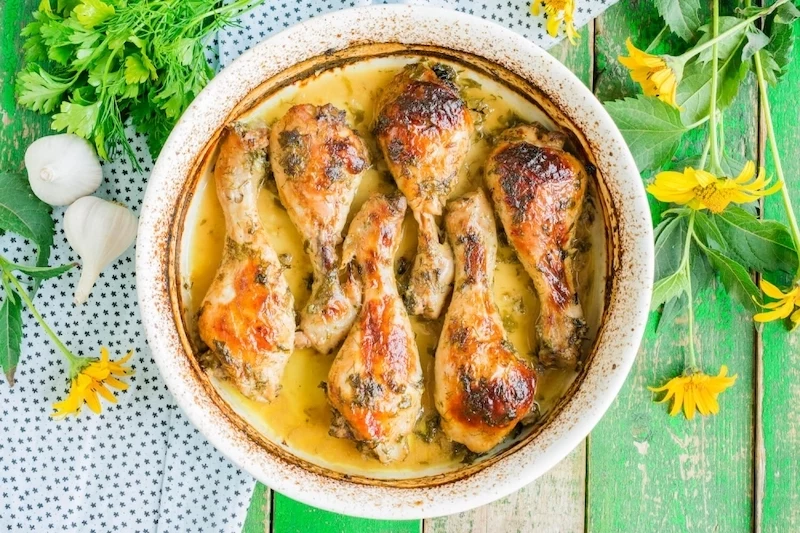
Acidic marinade: Uses ingredients like lemon juice or vinegar for a quick tenderizing action. Perfect for thin cuts of chicken when you’re short on time (30 minutes to 2 hours).
Enzymatic marinade: Relies on enzymes found in pineapple, papaya, or ginger. It’s incredibly powerful and can turn chicken mushy if left for more than a couple of hours.
For the most reliable results, especially for thick chicken breasts, a dairy-based marinade (yogurt, buttermilk) offers the gentlest and most foolproof tenderizing action.
When marinating chicken pieces, a simple poke can make all the difference. Using a fork to lightly prick the surface of the chicken breasts or thighs creates tiny channels, allowing your marinade to penetrate deeper and more quickly into the meat. It’s a two-second trick that significantly boosts both flavor and moisture.










